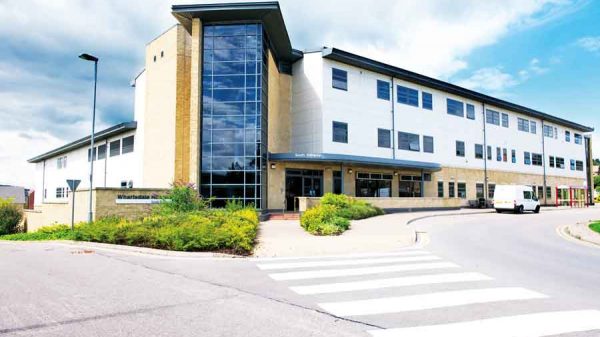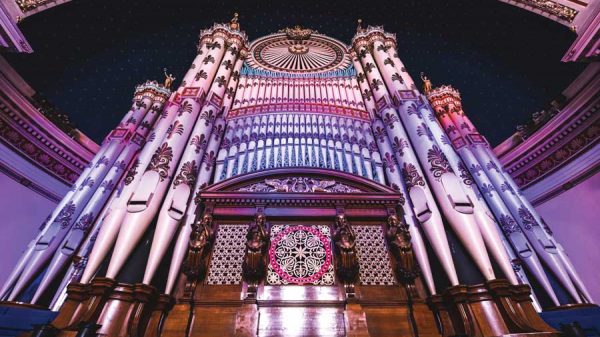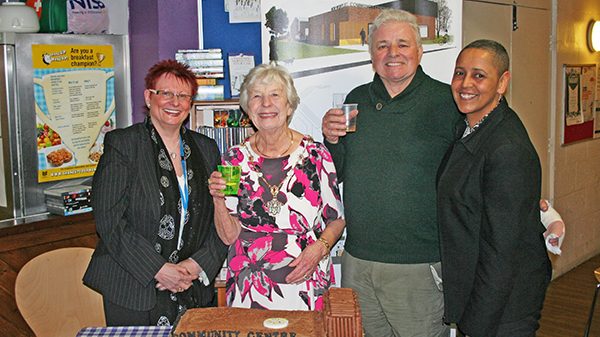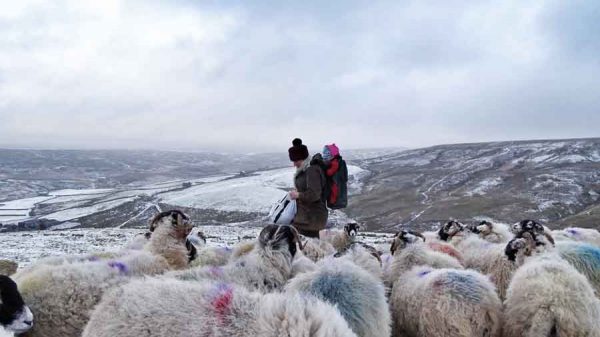−−− BY ROBERT LEWIS – LEEDS ASTRONOMICAL SOCIETY −−−
The nights are closing in now as the year grows old. It’s a good excuse to gaze skywards in the early evening and take a look at the heavens. What’s going on up there? Beyond the clouds and atmosphere the stars and planets are in their courses. Take a moment to wonder, for we are made of stuff of stars.
The stars are countless, filling the sky from horizon to horizon. The childhood nursery rhyme Twinkle, twinkle little star has a resonance because its lyrics ask what a star is. We only need to look at our closest star, the sun, for some of the answers. The sun is a big source of energy that drives all life and weather on our planet. Its strong gravity keeps us in its grip so we orbit around it. Its surface is between 50000 and 60000 C. and subject to vast explosions called solar flares. These flares reach out into space and cause radio interference and affect power grids. These flares are many times longer than the diameter of the Earth.
There’s an answer but like a lot of things it does not fully explain everything. These points of light could be many times bigger or smaller than the sun and are in various stages of their life span. Some are much dimmer or much brighter than our sun. Some of these points of light are not even stars but distant galaxies or nebulae, which are exploded stars.
In ancient times they used to group stars together and call them constellations. These constellations were given names of gods and animals. They form reference points for the night sky- star maps. Many of us are aware of one we unofficially call the plough because of its shape. It’s actually Ursa Major, the great bear. Another constellation of note is Orion, the hunter with his sword and bow and arrow. This sort of information is readily available in books and the internet.
At the time of writing we have in mind of the Cassini mission, a space probe that sent us such wonderful pictures of the planets and collected loads of data. Its main aim was to gather information from Saturn, its rings and moons. Finally it plunged into the atmosphere of Saturn, sending back its final images.
Has this article wetted your appetite? I hope so. If you would like to learn more and/or share ideas about stars, space and planets, why don’t you come along to the Leeds Astronomical Society? We meet every second and fourth Wednesday of the month, 7:30pm at the Quaker Friends Meeting House Woodhouse Lane. It’s opposite the Engineering Department of the University of Leeds and near Notre Dame College. The first meeting, a visiting speaker comes to give us a demonstration, slide show and talk. The second meeting of the month members give talks and demonstrations.
We do extramural activities like observation nights at the New Inn, Eccup. Details are on our website. We are available to do talks, demonstrations and activities for schools, groups and clubs. We work with adults and children.
Come along we’re a friendly bunch. We are open to all ages, whether you’re experienced or new to the subject and hobby. We will help you.
If you want to know more look on the Leeds Astronomical Society web site;
www.astronomyleeds.org.uk or e-mail:
info@ astronomyleeds.org.uk







